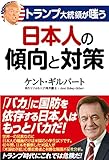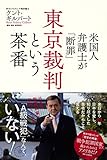真珠湾慰霊訪問は日米関係強固の総仕上げ 新時代を迎える可能性
Memorial Visit to Pearl Harbor Cements U.S.-Japanese Relations
Outlook for New Era
http://www.zakzak.co.jp/society/domestic/news/20170107/dms1701071000008-n1.htm
【ニッポンの新常識】Common Knowledge Revisited 98
謹賀新年。安倍晋三首相とオバマ米大統領は昨年末、ハワイ真珠湾をそろって慰霊した。真珠湾攻撃から75年を経た日米両国の「和解の力」が強調されたが、私は少し違う印象を持った。
Happy New Year to all our readers. At the end of last year, Prime Minister Shinzo Abe and U.S. President Obama together paid their respects at Pearl Harbor in Hawaii. They emphasized the power of amicable reconciliation 75 years after the attack on Pearl Harbor, but I had a slightly different impression.
2012年12月、第2次安倍内閣の発足に、オバマ氏は間違いなく懐疑的な目を向けていた。「親中・親韓」の側近から、右翼的で要警戒とでも吹き込まれたのだろう。
When the second Abe cabinet was formed in December 2012, Obama clearly viewed it with a wary eye. His pro-Chinese and pro-Korean advisers probably put the idea in his head that Abe was right-wing and must be viewed with caution.
しかし、最近は米国側の「理解の力」が進み、両首脳はことあるごとに日米関係の重要性と強固さを訴えてきた。日米離反工作を継続する中華人民共和国(PRC)や韓国に「無駄だ」と理解させたいようだ。真珠湾慰霊訪問はその総仕上げに見えた。
However, of late the U.S. side has gained a better understanding, and whenever the two leaders meet they always emphasize the importance and strength of the ties between the two countries. It is as if they are trying to get through to the People’s Republic of China (PRC) and Korea the futility of continuing all their political maneuvering in trying to break down the trust between the U.S. and Japan. The memorial service in Pearl Harbor seems like the culmination of that evolution.
ドナルド・トランプ次期大統領の就任式は、20日に行われる。就任後も対中強硬姿勢は変化しないだろう。レーガン大統領がソ連を崩壊させたように、PRCの崩壊を目指す気かもしれない。他方、日米関係は一層強固なものになり、新時代を迎える可能性が高い。
Donald Trump will be inaugurated as the next U.S. President on January 20th. He probably will not change the U.S. hardline policy toward the PRC. He may even be entertaining thoughts of trying to break up the PRC just as President Reagan brought about the fall of the Soviet Union. By contrast, it’s highly probable that U.S.-Japanese ties will grow even stronger, ushering in a new era of U.S. Japanese relations.
歴史を振り返れば19世紀半ば、ペリー艦隊による「砲艦外交」で、日米関係は幕を開けた。武力で脅迫され、1858年に調印したのが、日米修好通商条約である。
Looking back through history, the curtain rose on U.S.-Japan relations with the “gunboat diplomacy” of Admiral Perry’s armada in the mid-nineteenth Century, and in 1858 the Treaty of Amity and Commerce (United States–Japan) was signed under threat of military force.
日本に関税自主権はなく、米国に領事裁判権と片務的最恵国待遇を与える不平等条約だった。日本はその後も同様の不平等条約を、欧州の複数の国と締結している。
It was an inequitable agreement providing consular jurisdiction and most-favored nation status only to the U.S., and not allowing for Japanese customs autonomy. Thereafter Japan concluded similarly inequitable agreements with several European nations.
明治の日本人は不平等条約を「国の恥」と捉え、解消に心血を注いだ。大日本帝国憲法の制定も不平等条約解消を目指した活動の中の1つである。通商の不平等は明治末期に解消された。
Meiji-Era Japanese considered the inequitable agreements to be a national disgrace and put their hearts and souls into getting them dissolved. Enactment of the Meiji Constitution was one of those actions taken to get the inequitable agreements dissolved. Finally, in the latter part of the Meiji Era inequitable trade agreements were dissolved.
平成の現在、トランプ氏は、米国に不利な不平等状態を改善したいと考えている。安倍首相も以前から不平等解消に努力している。言わずと知れた、日米安全保障条約の話である。
Now in the Heisei Era, Mr. Trump wants to remedy agreements which are unfavorable to the U.S., and Prime Minister Abe has been working hard for a long time to resolve inequities. It goes without saying that what I am referring to here is the Treaty of Mutual Cooperation and Security between Japan and the United States of America.
1951年のサンフランシスコ平和条約調印の裏で、吉田茂首相(当時)が単独署名した旧日米安保条約は、米国が圧倒的に有利だった。米軍は日本を守る義務を負わず、占領終了後も日本での駐留権を確保した。
The old Treaty of Mutual Cooperation and Security between Japan and the United States of America, which was signed individually by then-Prime Minister Shigeru Yoshida on the sidelines of the signing of the San Francisco Treaty of Peace with Japan in 1951, was overwhelmingly favorable to the United States. The U.S. had no duty to defend Japan and secured the right to maintain bases in Japan following the end of the occupation.
事実、53年に韓国が島根県・竹島を強奪したときも、57年にソ連国境警備隊が、北海道・歯舞諸島の貝殻島に上陸して実効支配したときも、米軍は動いていない。
In point of fact, in 1953 when South Korea seized Takeshima, a part of Shimane Prefecture, and in 1957 when the Soviet Union Border Guard landed on and took effective control of Kaigarajima, an island in the Habomai chain, which in turn is a part of a Hokkaido, the U.S. did nothing.
安倍首相の祖父、岸信介首相(当時)が60年に行った条約改定で、米軍の片務的防衛義務が第5条に規定された。ただ、自主憲法制定を目指す岸首相にとって、これは明らかに緊急避難である。日本はそれを56年以上も放置した。
The unilateral defense obligation of the U.S. military was first included in Article 5 of the revised security treaty concluded in 1960 by then-Prime Minister Nobusuke Kishi, Prime Minister Abe’s grandfather. However, this was clearly just a temporary emergency measure to Kishi, who envisioned a new autonomously established constitution. Japan has now neglected this issue for over 56 years.
明治のみならず、大正、昭和の日本人も「国の恥」と嘆くのではないか。
Not only Meiji Era but also Taisho and Showa Era Japanese people must consider this, too, as a national disgrace.
 | トランプ革命で甦る日本 1,296円 Amazon |
 | トランプ大統領が嗤う 日本人の傾向と対策 1,404円 Amazon |
 | 米国人弁護士が「断罪」 東京裁判という茶番 1,512円 Amazon |
ケント・ギルバートの「引用・転載・拡散禁止!」FBP:https://goo.gl/hDtbA5
まぐまぐメルマガ登録:http://www.mag2.com/m/0001655307.html
Official Home Page 公式サイト:http://www.kentgilbert.com/
Official Blog 公式ブログ:http://ameblo.jp/workingkent/
Twitter ツイッター: https://twitter.com/KentGilbert01
Kent Channel ケント・チャンネル:https://www.youtube.com/channel/UCkRaXYnq-O_b82Yz_ASRLwA
放送法遵守を求める視聴者の会:http://housouhou.com/
